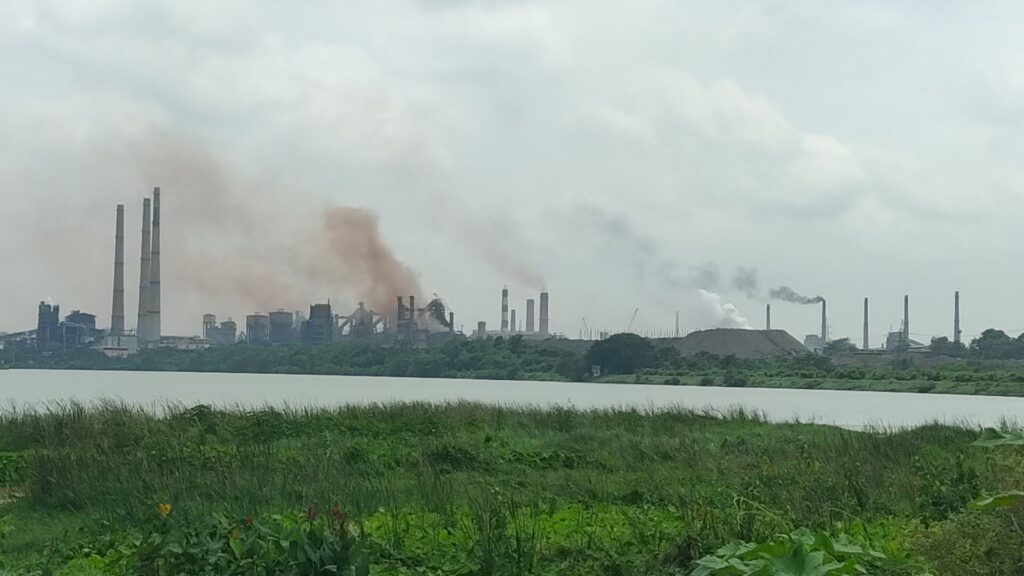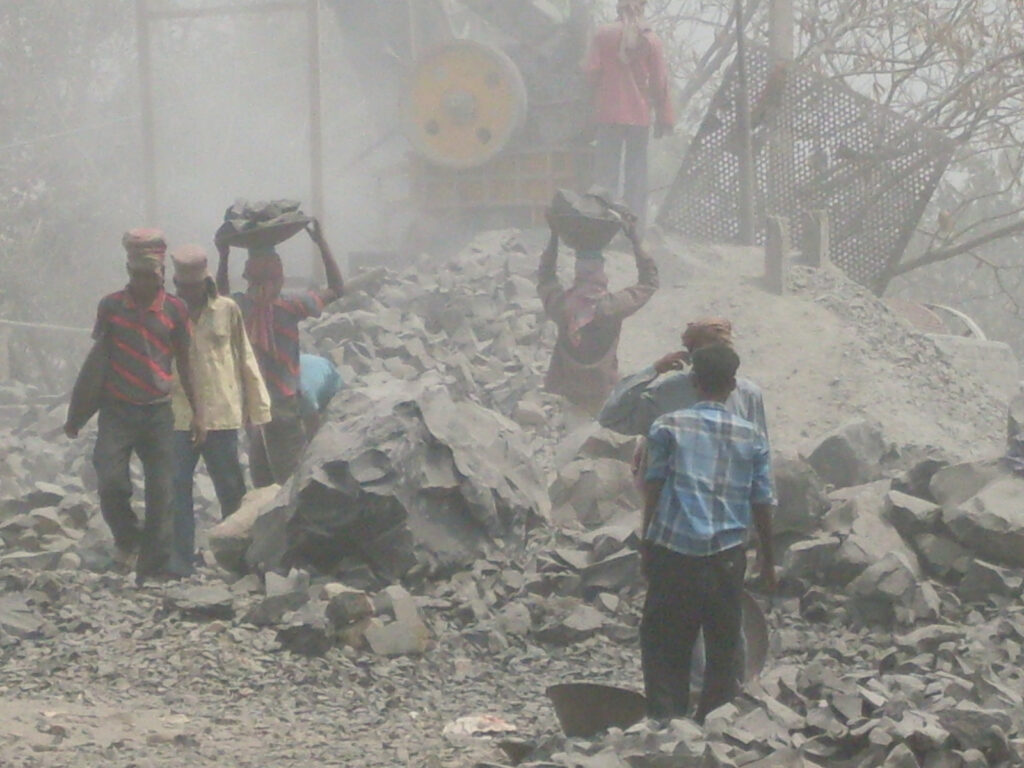
‘Johar, Rashtrapati-babu. We are very proud and happy that you have come to our Santhal Pargana and we are also very proud that we have been asked to sing and dance before you and welcome you to our place. We will sing and dance before you but tell us, do we have a reason to sing and dance? Do we have a reason to be happy? You will now start building the power plant, but this plant will be the end of us all, the end of all the Adivasi. These men sitting beside you have told you that this power plant will change our fortunes, but these same men have forced us out of our homes and villages. We have nowhere to go, nowhere to grow our crops. How can this power plant be good for us? And how can we Adivasis dance and be happy? Unless we are given back our homes and land, we will not sing and dance. We Adivasis will not dance. The Adivasi will not—
The above passage is taken from Hansda Sovendra Shekhar’s book “The Adivasi Will Not Dance” in which a tribal man named Mangal Murmu refuses to dance at a diplomatic convention. The book was published in 2015 and it was banned by the then Bharatiya Janata Party government of Jharkhand in August 2017. The then opposition party Jharkhand Mukti Morcha, also supported this decision of BJP. The government believed that this book disreputed the Santhal tribals. Although the ban was lifted in December of the same year, the ban brought the governmental feudal collusion to the fore..
The tribal pockets of Jharkhand, Odisha, Chhattisgarh, and West Bengal have long been grappling with the complex and deeply rooted issues of displacement and rehabilitation. These regions, characterized by their rich cultural heritage and unique way of life, have faced significant challenges due to developmental projects, industrialization, and urban expansion. This article delves into the factors contributing to the sustained problems of displacement and the inadequacies of rehabilitation efforts in these tribal areas.
Corporatization and Displacement
Since the 1990s some policies have been made with the intention of increasing capital investment. In the name of development, rules have been twisted for big industries under mining schemes. The class of public that has historically profited from the entire notion of Special Economic Zones, Industrial cities and Power Projects are not obscured from anyone. Hence it becomes clear, to whom this development is and for which section of the society. In the case of Jharkhand, displacement is strongly linked to such development. There has been a significant issue in the agriculture sector in recent years, with one worrying element being the increase in farmer suicides. Despite this, the government is focusing more on industry. As a result, numerous state governments have signed a number of Memorandums of Understanding (MOUs) since 2005.
Concerning the issue of displacement, there is no precise statistics available on how many families of the tribal states of Jharkhand, Chhattisgarh, West Bengal & Orrisa have been affected by SEZ and other projects. And there is no indication of how many displaced families have reached an advanced stage in their lives following displacement. The remaining evicted farmers have become either landless workers or have adopted employment in tertiary sectors to make ends meet. The notion of development is often defined as a method that results in beneficial advancement in financial, environmental, socio-political, and epidemiological status of people. The goal of development is to improve people’s quality of life by creating job prospects for locals while protecting the ecosystem’s assets. But all these theoretical notions are being proved as a bookish comprehension in the tribal land.

Darkness Under the Light of Development: A Case Study
A plant built with Soviet aid in 1965 was India’s fourth integrated public sector steel plant, run by the 1964-founded Bokaro Steel Limited (BSL). In compliance with the Public Sector Iron and Steel Companies Restructuring and Miscellaneous Provision Act of 1978, the BSL was amalgamated into SAIL. When the plant was announced in 1956, the then-Bihar government of Shri Krishna Sinha quickly sanctioned it and granted 31,287.24 acres, comprising 26,908.565 acres of acquired land, 3,600.215 acres of free gairmajarua, and 778.46 acres of forest land.
The state government evacuated the area and turned it over to Bokaro Steel Plant within days, however owing to a lack of consensus on adequate rehabilitation and planning, 20 mauzas (groups of villages) totaling 825.855 acres could not be evacuated. Though SAIL asserts these 20 mauzas, the villagers claim it as their acquired property that has been awaiting rehabilitation for the past six decades.
The region is surrounded by various enterprises, including the Bokaro Thermal Power Plant, Chandrapura Power Plant, and Chandankiyari Township, and is located in Bokaro Steel City. Because the settlements are on contested territory, 19 of the 20 mauzas lack a panchayat.
Despite the fact that the majority of the approximately 70,000 villagers living in these 19 mauzas are on the electoral list, they are not eligible for rural programs owing to a lack of formal recognition.
During the long months of April and July, the wind generally blows from the steel plant’s side towards these villages. Winds carry toxic smoke in the form of residue to the houses, farms, and, unexpectedly, wells of these settlements. During these months, the region’s average AQI reaches 150, and many villagers grow ill. The nearest healthcare facility is around 20 kilometers away. A private vehicle would cost around Rs 500, and not every household can afford it. Every village has around 15 people with TB symptoms, but their families cannot afford to go to the city to be tested and treated. Aside from health, these settlements are also extremely underserved in terms of education. Some of the government schools here are in ruins. Many schools have closed throughout the years, and those that have remained have been merged with faraway campuses.
The case of displacement of villagers of Bokaro is just an example. Various large-scale industrial, mining, irrigation, and power projects were launched in the state in the name of development, such as the Heavy Engineering Corporation, Chandil Power Project, Ranchi Master Plan, Subarnarekha Dam Project, Saranda Action Plan, Ranchi NLU, Tata Iron and Steel Company, Jadugoda Uranium Mines, Tenughat Thermal Power Plant, Imperial Chemical Industries’ IEL Factory of Gomia, and so on. However, the benefits of these projects have only accrued to the big business houses, and all that the displaced people have received is wages for providing manual labor required by these projects.
Development is an important element for enhancing people’s lives. It necessitates the seizure of land from inhabitants who are historically the source of their livelihood means in order to construct industries, communications, civic infrastructure, and services. Jharkhand is a developing state with a substantial number of tribals whose socioeconomic conditions are similar to those in Nandigram, West Bengal. Any development programme that does not take these people into account would fail, as it did in Nandigram. Appropriate legislation and measures are required to protect the rights and development of local people. It is vital to improve their socioeconomic situations by providing acceptable pay and means of living, particularly for tribes, and by diversifying resources in order to reduce poverty and socioeconomic depravity.
And hence, one of the critical challenges of Jharkhand has been displacement and land grabbing, in which the natives have been refused adequate recompense for the use of his or her land. While the property is leased for a few years, a look at the sites and the deep trenches in them plainly shows that they cannot be resurrected in order to be used for farming. According to the Samatha judgment’s recommendations, adivasis should get a bigger proportion of benefits, taking into account their future livelihood repercussions. The Jharkhand government is referring to these grazing pastures as ‘anabad,’ which means deserted land, in order to override realms of society for commercial and infrastructure interests. And according to findings, over 80% of the people in the Santhal Parganas rely on land and agriculture for a living, therefore new proposals must emphasize land and natural resource-based sectors of growth that possess the opportunity to benefit the majority. The state of Jharkhand is classified as a Schedule 5 area. The architects of the Fifth Schedule to the Constitution intended to create a different framework for the administration of Scheduled Areas to suit the unique demands of tribal populations.
These development plans play havoc in the mineral-rich states, which are predominantly Schedule V territories, because state laws are implemented in contravention of the PESA. The actions done by the states have not been sufficient in strengthening the notion of local self-government as envisioned by the government when PESA was enacted.
In the end, the State and the central government will have to decide with whom they are. With the tribals of the state who have been pushed into darkness for centuries or with the corporates which damaged not only the tribal culture but also the Jal-Jangal-Zameen.

Author is Vikram Raj, freelance Journalist who writes on a wide range of stories from stories of displacement, atrocities and human rights violations.